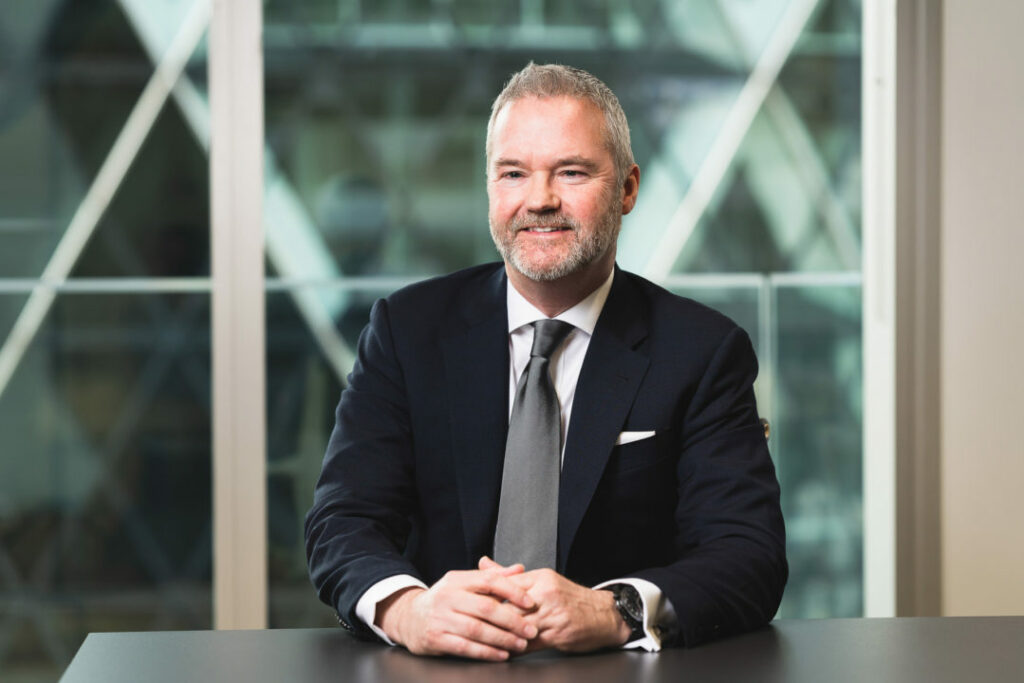Credit at Cardano
An interview with Justin Hatch, Head of Credit
In November 2021, Justin Hatch joined Cardano to strengthen our internal credit capabilities. Justin’s first task is to develop the core of Cardano’s cashflow portfolios focusing on investment grade credit. This will complement our existing capabilities in Liability Driven Investing.
Investing in corporate bonds is not about picking the winners, it is about avoiding the losers
Having worked in the credit market for more than 25 years, Justin has successfully navigated several credit cycles and financial crises. Most recently he worked at the British Airways pension fund as Head of Credit for 16 years where he was the lead fund manager for both buy and maintain and active corporate bond mandates within the Airways Pension Schemes. Before that, he worked on a variety of institutional and retail mandates at Old Mutual Asset Managers.
Still after more than two decades, the credit markets continue to fascinate Justin. “Markets are constantly changing and no two days are the same.” According to Justin, investing in credits is similar to solving puzzles where the pieces are changing shape over time. “It is exciting to make the analysis and adapt as new information becomes available. It gives me a great satisfaction when longer term positions come to fruition.”
Having worked in the credit market for more than 25 years, Justin has successfully navigated several credit cycles and financial crises. Most recently he worked at the British Airways pension fund as Head of Credit for 16 years where he was the lead fund manager for both buy and maintain and active corporate bond mandates within the Airways Pension Schemes. Before that, he worked on a variety of institutional and retail mandates at Old Mutual Asset Managers.
Still after more than two decades, the credit markets continue to fascinate Justin. “Markets are constantly changing and no two days are the same.” According to Justin, investing in credits is similar to solving puzzles where the pieces are changing shape over time. “It is exciting to make the analysis and adapt as new information becomes available. It gives me a great satisfaction when longer term positions come to fruition.”
Why Cardano?
“It was the opportunity to build up an internal credit desk with a dedicated focus on meeting the needs for DB schemes. For me this is a path that is well travelled. Starting again from scratch allows me to make improvements based on my past experiences”.
An important matching asset for maturing DB schemes
Over the last couple of years many DB schemes have narrowed their funding gap and are now considering their endgame. “As a scheme’s required rate of return decreases it is a good idea to transition the asset allocation from diversified return seeking assets, towards a greater use of cashflow matching assets.” Corporate bonds and other similar credit assets also provide a mixture of liability matching and excess return over government bonds.
Justin’s first task is to develop a core investment grade component for Cardano’s cashflow portfolios. Thie will follow a ‘buy and maintain’ approach, with low turnover. A cashflow portfolio is different from a traditional actively-managed credit portfolio since it is tailored to the needs of DB schemes. “In the cashflow portfolio, all income from the investments is distributed back to investors rather than re-invested.”
The risk in cashflow matching is credit defaults, not volatility
Buying and holding investment grade corporate bonds to maturity means that the yield above government bonds is locked in for the full investment period. As long as the cashflows from the bonds are being paid, the daily variation in valuation is of less importance. In other words, the real risk in a cashflow portfolio is that an issuer defaults, leading to value being lost in subsequent recovery proceedings.
Justin’s first task is to develop a core investment grade component for Cardano’s cashflow portfolios. Thie will follow a ‘buy and maintain’ approach, with low turnover. A cashflow portfolio is different from a traditional actively-managed credit portfolio since it is tailored to the needs of DB schemes. “In the cashflow portfolio, all income from the investments is distributed back to investors rather than re-invested.”
The risk in cashflow matching is credit defaults, not volatility
Buying and holding investment grade corporate bonds to maturity means that the yield above government bonds is locked in for the full investment period. As long as the cashflows from the bonds are being paid, the daily variation in valuation is of less importance. In other words, the real risk in a cashflow portfolio is that an issuer defaults, leading to value being lost in subsequent recovery proceedings.
The main difference between credit and equity investors is that a credit investor focuses on the downside while an equity investor mainly focuses on the upside. “Investing in corporate bonds is not about picking the winners, it is about avoiding the losers”. This explains why credit markets typically show the first sign of market distress, before it is reflected in the stock market.
Among investment grade corporate bonds, those that are rated BBB by the credit rating agencies have the largest variation in quality. Identifying the good and the bad over the credit cycle is possible for those who have strong credit analysis skills. This is what separates the wheat from the chaff, as Justin puts it.
Extraordinary team
Justin has hired two additional credit analysts bringing the whole credit team to a position of being ten people strong. These new hires have a background from credit rating agencies. “It gives an edge understanding the strengths and weaknesses behind the official ratings, and having come from both Moody’s and S&P Global Ratings the new analysts are well versed in anticipating what ratings triggers to monitor and have proactive views on.”
Among investment grade corporate bonds, those that are rated BBB by the credit rating agencies have the largest variation in quality. Identifying the good and the bad over the credit cycle is possible for those who have strong credit analysis skills. This is what separates the wheat from the chaff, as Justin puts it.
Extraordinary team
Justin has hired two additional credit analysts bringing the whole credit team to a position of being ten people strong. These new hires have a background from credit rating agencies. “It gives an edge understanding the strengths and weaknesses behind the official ratings, and having come from both Moody’s and S&P Global Ratings the new analysts are well versed in anticipating what ratings triggers to monitor and have proactive views on.”
Looking ahead
“For the last decade, credit spreads and yields have been supported by the Central Banks’ quantitative easing and purchasing programs. As interest rates increase and liquidity is removed from the system, there will undoubtedly be more volatility, but this will also create investment opportunities at attractive levels.” Justin thinks large flows of pension money into the credit market, for the next decade, will limit any fundamental increase in credit spreads and the market remains technically well supported by a broad range of investors.
How can we help you?
If you are thinking about the endgame for your scheme and what could be done to de-risk your strategy, don’t hesitate to contact us. We can help you with providing a safe journey towards endgame for you and your members.





